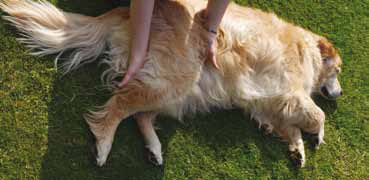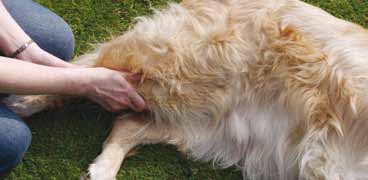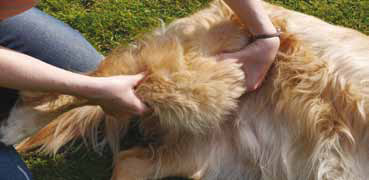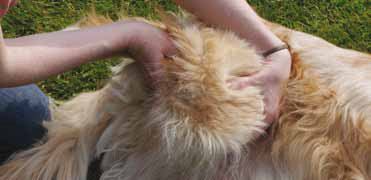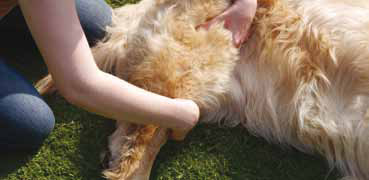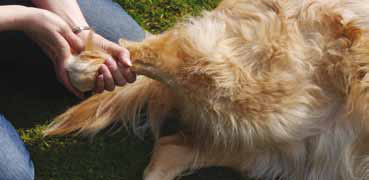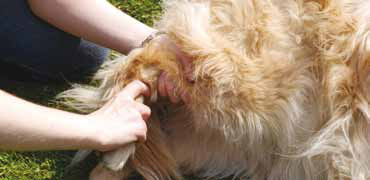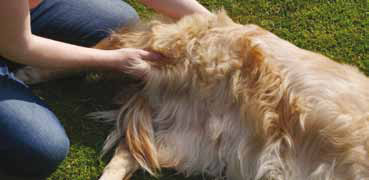Recent years have seen an increase in the use of physiotherapy techniques in the treatment of animals and numerous conditions have been seen to benefit. In the UK (other countries may differ), The Veterinary Surgery (Exemptions) Order 1962 allows non veterinary surgeons (VS), such as veterinary nurses (VN), to perform physiotherapy on animals if done under the direction of a VS who has examined the animal and prescribed the treatment. Although this theoretically allows VNs to perform any form of physiotherapy as prescribed by the VS, there are some physiotherapy techniques that should be reserved for qualified veterinary physiotherapists or those who have received additional training. However, there are a number of basic physiotherapy techniques that can be applied by VNs that can have a beneficial impact on the speed of recovery and quality of life of the patients in their care. This article will cover two such techniques: effleurage and passive range of motion (PROM) exercises.
Purpose of treatment
Effleurage
Effleurage is a massage technique where gentle pressure is applied to the skin while moving the hands proximally in the direction of the heart and towards the nearest lymph node. Massage has psychological benefits for the patient by helping them to relax, along with multiple physiological benefits including:
Additionally, the use of massage prior to the application of other techniques, such as PROM exercises, is beneficial as it has been reported to warm the tissues making them more flexible (Downing, 2011).
PROM exercises
Many conditions suffered by animals result in a period of reduced mobility. Disuse of a limb or limbs, even over a short period of time, can result in significant changes to the musculoskeletal tissues as is summarised in Table 1. PROM exercises involve the passive movement of joints within their available range of motion (ROM) with the intention of maintaining the current available ROM. Along with helping maintain the ROM of the joint, the use of PROM exercises helps to maintain the flexibility of the musculoskeletal tissues of the limb and distribute synovial fluid to maintain the health of the joint. They are seen as an important component of most physiotherapy programmes because if they are not utilised a permanent reduced ROM can occur (Shumway, 2007). It is recommended they should be performed 2–3 times daily until the animal is more mobile and able to perform exercises that encourage active movement of the joints. Controlled active exercise should be introduced as early as possible in the rehabilitation of patients as passive exercises, requiring no muscular contraction, are not sufficient to prevent/reverse the changes (Table 1) that occur due to disuse (Millis, 2004).
| Musculoskeletal tissue | Effects of disuse |
|---|---|
| Cartilage | Reduced synovial fluid production and distribution |
| Reduced cartilage thickness | |
| Changes in cartilage matrix | |
| Joint capsule | Reduced range of motion |
| Increased intra-articular pressure | |
| Muscle | Reduced muscle strength |
| Reduced mitochondrial function | |
| Increased stiffness of connective tissues | |
| Ligaments/tendons | Reduction in the cross-sectional area and disorganisation of fibrils |
| Reduction in collagen | |
| Reduced strength | |
| Bone | Reduced bone mass, density and stiffness |
Suitable cases and contra-indications
Any patient that has limited use of one or more limbs will have the potential to suffer the detrimental effects of disuse, and would be suitable candidates for the application of effleurage and PROM exercises. Suggested cases include recumbent patients, arthritic patients, patients recovering from spinal injury/surgery and patients recovering from orthopaedic surgery. Research has been conducted to show the benefits of physiotherapy programmes, which incorporated massage and PROM exercises, in patients recovering from cruciate ligament surgery (Millis et al, 1997; Marsolais et al, 2002; Monk et al, 2006).
There are however circumstances where the application of these techniques could be detrimental and so discussion should always take place with the treating VS prior to implementing these techniques. The use of massage should be limited in the inflammatory phase post surgery, as the increase in blood flow can exacerbate swelling. Care should also be taken when implementing PROM exercises in the presence of unstable fractures, joint luxations, recent skin grafts and certain ligamentous and tendonous injuries where treatment could result in further injury (Shumway, 2007).
Conclusion
Physiotherapy techniques are beneficial to a patient's wellbeing and to help minimise the detrimental effects of disuse and accelerate a patient's recovery. This article has described two basic techniques that can be employed by VNs under the direction of the prescribing VS. Other techniques that VNs may wish to consider exploring are cryotherapy, heat therapy, other massage techniques and therapeutic exercises. Although each physiotherapy technique has its individual benefit they are best used in combination as part of an ongoing rehabilitation programme.


